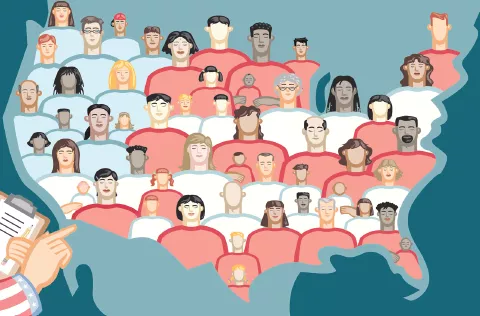Key Takeaways
- The 2010 census “missed 10 percent of children under the age of five”—that’s more than 2 million children.
The importance of the U.S. census to the well-being of children and the strength of their public schools cannot be overstated.
Using census data, the federal government allocates tens of billions of dollars in education funds to states and localities annually using formulas that factor in population and poverty levels.
An accurate census count is the critical first step to helping educators address the needs of every child who walks through their doors. The census count happens only once every 10 years; when we undercount young children, the consequences can last most of their childhood.
“Educators are trusted, and we can reassure others that participation in the census is safe, important, and necessary,” says NEA President Lily Eskelsen García, a former Utah elementary teacher. “Being counted helps ensure that all communities receive their fair share of federal and state funding for schools and other critical services.”
So how does the census work? Here we answer some common questions and give you resources to help ensure that all of your students are counted.
Why is the census so critical for students and educators in public schools?
Census data determine the distribution of more than $800 billion in public funds, including to programs that help our students. Some of those programs provide supports for children with special needs and those from low-income families.
These funds help schools reduce class sizes, hire specialists, continuously bolster teacher quality, offer preschool to low-income families, and ensure that hungry students can get breakfast or lunch to help them pay attention in class.
Census data are also critical to the Supplemental Nutrition Assistance Program, which helps millions of low-income families afford food and has lasting benefits for children’s health and academic success.
How does an inaccurate census happen, and how does it negatively affect our students?
When children and their families go uncounted, it is unlikely their schools and communities will receive the resources needed to help support their success and well-being.
Young children are at high risk of not being counted, research shows. The Annie E. Casey Foundation notes that the 2010 census “missed 10 percent of children under the age of five”—that’s more than 2 million children.
Why? Hard-to-count populations include some of our most vulnerable students: recent immigrants or English language learners; those without financial security and stable housing; and children in shared custody arrangements, or those being raised by someone other than their parents. Children ages 0–5 are sometimes undercounted, simply because the adult filling out the form is unaware that babies and toddlers should be included.
“Job one is to do everything we can to support a complete and accurate census,” says NEA Senior Counsel Emma Leheny. “It’s the first step in understanding the needs of the next generation of school-age children.”
What can you do to help?
As an educator, you can help explain the critical importance of the 2020 census to others in your community—and reduce fear and misinformation. Go to nea.org/census to find resources and learn more.



